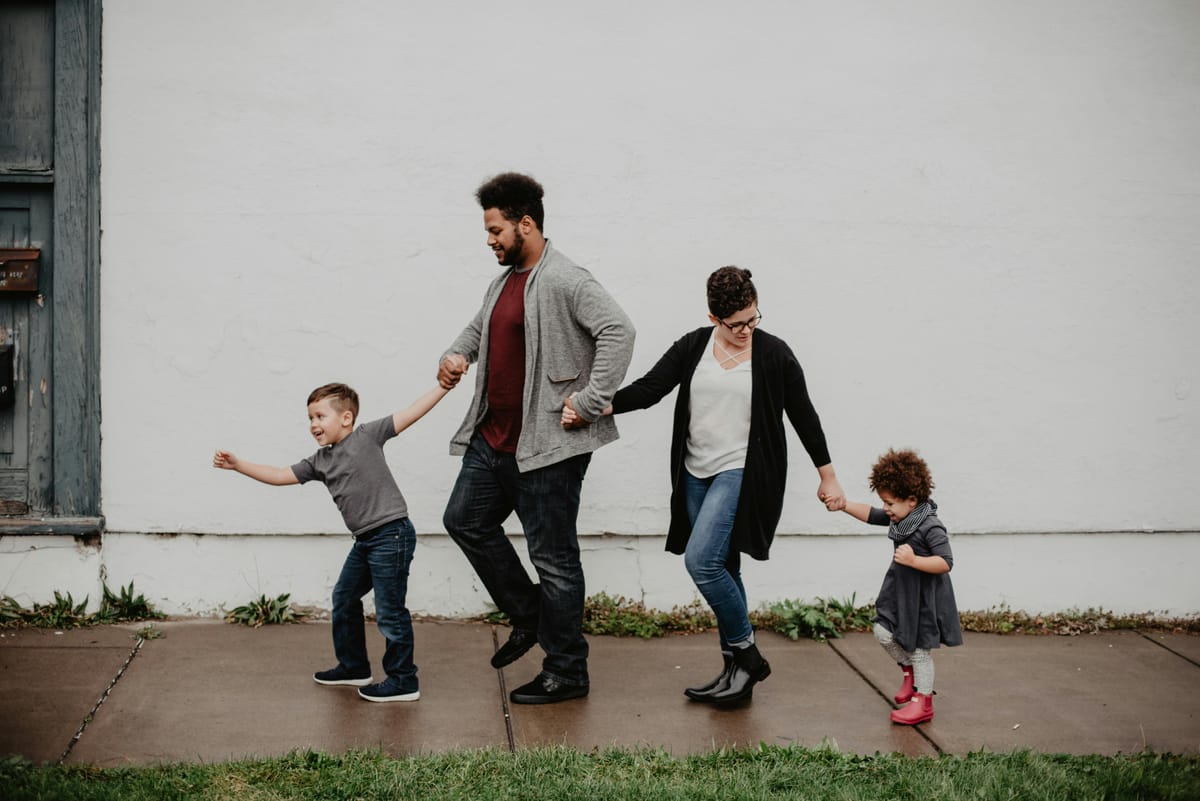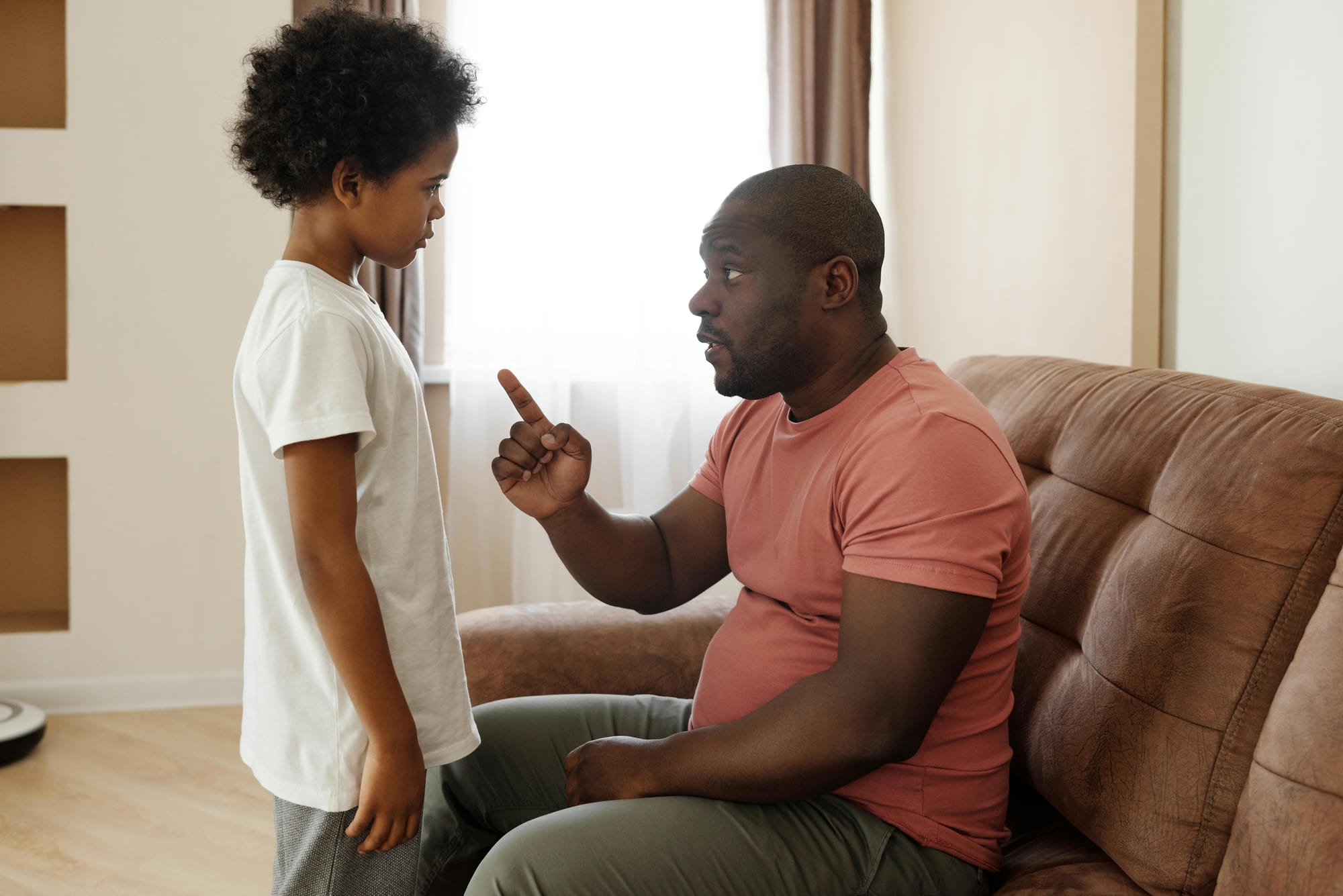Parenting Without Projection | Keeping Anger From Affecting Your Kids

Understanding Anger in Parenting
Anger is a natural emotion—one that every parent experiences. But when frustration builds and you find yourself on the verge of a lash out, it’s a sign that something deeper is happening beneath the surface. Whether it's because your child won’t listen, bedtime turned into a battleground, or you’re simply exhausted from the mental load of parenting, anger and frustration can arise even in the most loving homes.
The good news? You’re not alone, and there are compassionate, constructive ways to deal with it.
Parenting is incredibly rewarding, but also deeply challenging. Many adults weren't taught how to express their anger in healthy ways, so when they become parents themselves, they may find it difficult to handle big feelings—both their own and their child’s. The key to breaking that cycle starts with self-awareness and learning new strategies that support personal growth, emotional regulation, and a better relationship with your child.
Let’s take a deeper look at how anger rather than connection can take the lead in parenting—and how you can shift back toward being a peaceful parent, even when it’s hard.
Why Parents Lash Out and What’s Going On Underneath
It’s easy to think anger comes from the moment itself—spilled juice, tantrums, talking back—but in reality, anger is often the result of emotional pain, overwhelm, or unmet needs that have been building in the background.
You might get angry because:
- You feel disrespected or ignored
- You’re exhausted, overstimulated, or mentally overloaded
- You’re parenting through triggers from your own childhood
- Your child’s behavior brings up feelings of inadequacy or loss of control
It’s Not Just About the Child
Many times, you’re angry because of what’s going on internally—not what your child is doing. A child refusing to brush their teeth might not seem like a big deal on paper—but if you’re carrying stress from work, lack of sleep, and feelings of failure, that moment can feel like the tipping point.
Understanding the psychology today of emotional regulation shows us that anger is often a secondary emotion—beneath it is hurt, shame, anxiety, or sadness. When parents can name what’s really going on underneath, it becomes easier to respond with empathy instead of reacting in anger.

How Anger Affects Your Relationship with Your Child
The Impact of Angry Responses
When parents lash out, yell, or use harsh tones repeatedly, it can damage trust and emotional safety. Children—especially younger children—depend on their caregivers for regulation. If a parent’s response is unpredictable or intense, the child may become anxious, fearful, or shut down emotionally.
Over time, repeated angry outbursts can lead to:
- A dysfunctional parent-child dynamic
- Increased irritability in children
- Emotional distancing
- Learned aggression or fear-based compliance
- Long-term effects on self-esteem and attachment security
That doesn’t mean you have to be perfect. But it does mean the way we deal with anger matters. Acknowledging our angry feelings instead of ignoring or suppressing them—and making repairs when needed—can strengthen our bond with our children and help them feel secure even when things go wrong.
How to Manage Anger in the Moment
When strong emotions start to rise, it can feel like your only options are to yell, swear, or shut down. But pausing before the angry response kicks in can make a big difference—both for you and your child.
Take a Deep Breath
The classic advice still works. Taking a deep breath activates the parasympathetic nervous system and helps your brain re-engage the rational part that shuts down during anger.
Try this: Inhale for four counts, hold for four, exhale for six. Repeat three times. This simple breathing exercise can really help interrupt escalating feelings before they take over.
Stay Calm with Grounding Techniques
Grounding is the practice of bringing your awareness to the present. When you feel like you’re going to lose control, pause and name 5 things you can see, 4 things you can touch, 3 you can hear, 2 you can smell, and 1 you can taste. This mindfulness technique helps anchor you in reality, which can help get calmer.
Use a Timeout—for Yourself
Timeouts aren’t just for kids. If you feel like you're about to lash, it's completely okay to say, “I need a moment” and step away. This gives both you and your child a chance to reset before things escalate the situation. Going into another room, splashing cold water on your face, or just sitting in silence for a minute can shift everything.

Parenting and the Importance of Self-Regulation
Parenting Doesn’t Require Perfection—Just Awareness
It’s okay to feel overwhelmed. It’s okay to feel like you're failing sometimes. And yes, it’s even okay to feel angry. But it’s how we respond in those moments that counts.
Learning how to manage anger is one of the most valuable parenting tools you can develop—not just for your child’s sake, but for your own wellbeing. Regulating your emotions doesn’t mean you repress them. It means you acknowledge what’s there, and you find healthier ways to cope.
Name It to Tame It
Dan Siegel, a renowned psychologist, encourages parents to “name it to tame it.” That means when anger and frustration arise, say it out loud: “I’m feeling really angry right now.” Naming your emotion helps reduce its intensity, gives your child a model for emotional literacy, and reminds both of you that feelings are okay—it’s what we do with them that matters.
When You’re Still Angry After the Moment Passes
Sometimes the feeling doesn’t go away, even after the storm is over. You might have calmed your voice, stopped yelling—but inside, you’re still angry.
This is where mindfulness, self-inquiry, and even professional help can make a difference. You might need to journal, take a walk, or breathe deeply again to get back to a regulated state.
If you find yourself frequently stuck in lingering resentment or irritability, or if you tend to lash out in ways that feel out of control, it may be time to speak with a counsellor or therapist. There’s no shame in needing to get professional support—especially when the stakes include your relationship with your child.

Signs You Might Need to Seek Professional Help
Anger can become dangerous when it's constant, unpredictable, or directed in harmful ways. Here are some signs it may be time to talk to a counsellor or seek professional help:
- You feel like you can’t control your reactions
- You yell, swear, or lash out almost daily
- Your child seems fearful of your reactions
- You feel guilt or shame after angry episodes but don’t know how to stop
- You’re experiencing anxiety and depression alongside your anger
- You're avoiding time with your child to prevent emotional episodes
A psychologist can help you understand your triggers, develop healthier coping tools, and explore any deeper emotional pain that may be contributing to your reactivity. Therapy is not a sign of failure—it’s a courageous step toward being a more peaceful parent.
Teaching Emotional Regulation to Your Child
Helping your child learn how to express their anger without yelling or lashing out is one of the greatest gifts you can give them. Children model what they see—and if you’re finding ways to stay calm, own your reactions, and use emotional language, your child is learning that too.
How to Support a Young Person When They’re Angry
When your child is having a meltdown or tantrum, it’s easy to react with your own angry response, especially if you're already feeling overwhelmed. But the best thing you can do is get low, use a soft tone of voice, and say something like:
“I can see you’re having a hard time. I’m here when you’re ready.”
This doesn’t mean letting go of boundaries—it means holding limits with empathy. When young people feel seen in their strong emotions, they’re less likely to bottle them up or act them out aggressively later.

Modeling Emotional Intelligence Through Parenting
Your child learns how to handle frustration, disappointment, and conflict by watching how you do it. If you yell when you’re stressed, they’ll likely do the same. If you take a deep breath and speak calmly, they’re more likely to learn how to pause and regulate too.
Teaching Through Repair
Even when you lash out or make mistakes, your response afterward is powerful. If you’ve yelled or reacted in anger, go back and say:
“I’m sorry I yelled earlier. That wasn’t okay. I was feeling really stressed, but it’s not your fault. I’m working on handling things better.”
This teaches children that adults make mistakes too—and that they can take responsibility when they mess up. It’s also a way to prevent resentment and distance from building in your relationship with your child.

Creating a Family Culture Around Emotional Awareness
One of the best long-term strategies is building a home where emotions aren’t feared—they’re understood.
Try adding these simple habits into your daily routine:
- Ask, “What’s going on in your heart today?” instead of “How was school?”
- Use books, TV shows, or real-life moments to point out feelings: “That character looks frustrated. What do you think happened?”
- Talk about what you’re feeling too—not just happiness, but stress, disappointment, and fear.
Over time, this builds emotional literacy and empathy, which can make it a lot easier to cope with challenges as they arise.
When Triggers Come From the Past
Many parents don’t realize their reactions to their child are actually linked to unconsciously held beliefs or painful past experiences. Maybe your child refusing to listen reminds you of not feeling heard as a kid. Or maybe their anger feels scary because it mirrors a dynamic you once had with your own caregivers.
Working through these patterns—especially with a counsellor or therapist—can help you take more responsibility for what you’re carrying, instead of projecting it onto your child. You can’t always change your past, but you can choose how to show up for your child in the present.

Helping Kids Understand They’re Not “Bad” for Feeling Angry
Children who are punished or shamed for feeling mad often grow up to repress their emotions or lash out unpredictably. Instead, let them know it’s okay to feel angry. The goal isn’t to avoid the feeling—it’s to learn how to move through it constructively.
You might say:
- “It’s okay to be mad. Let’s find a safe way to let it out.”
- “Want to go hit a pillow or do some jumping jacks to get the energy out?”
- “Let’s take a break and breathe together for a minute.”
Helping children recognize and name their feelings before they explode is a foundational part of anger management and lifelong emotional health.
When Big Feelings Lead to Big Behaviors
If you find yourself in repeated power struggles, angry outbursts, or moments where you or your child are shutting down emotionally, it might be time to reevaluate the routines, expectations, or pressure within your home. Sometimes kids can’t control their behavior not because they’re “bad,” but because their brains are still learning how to self-regulate.




